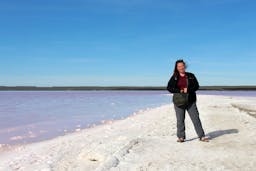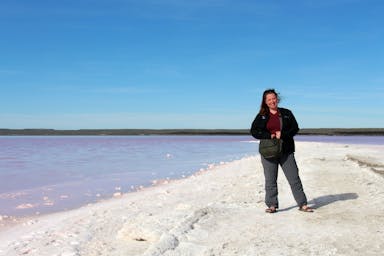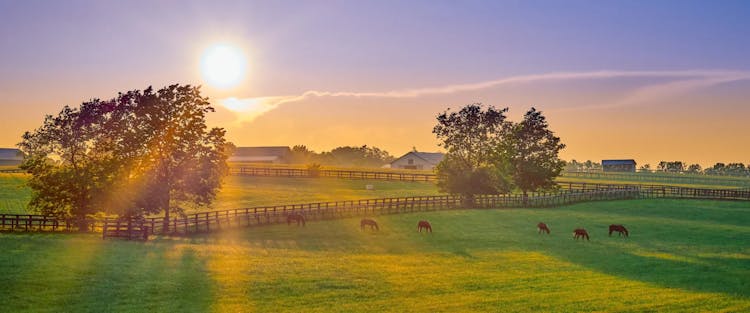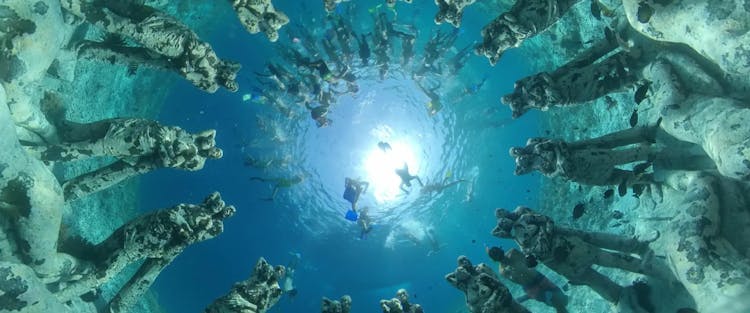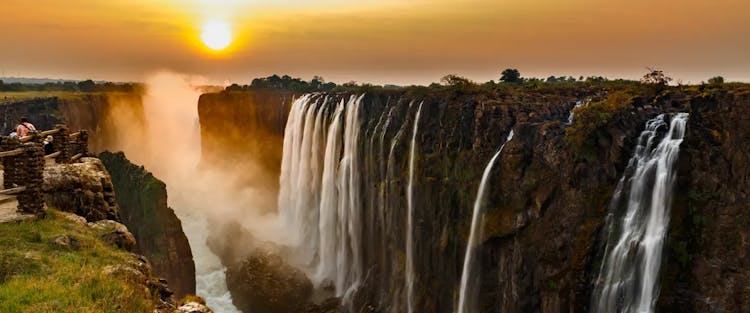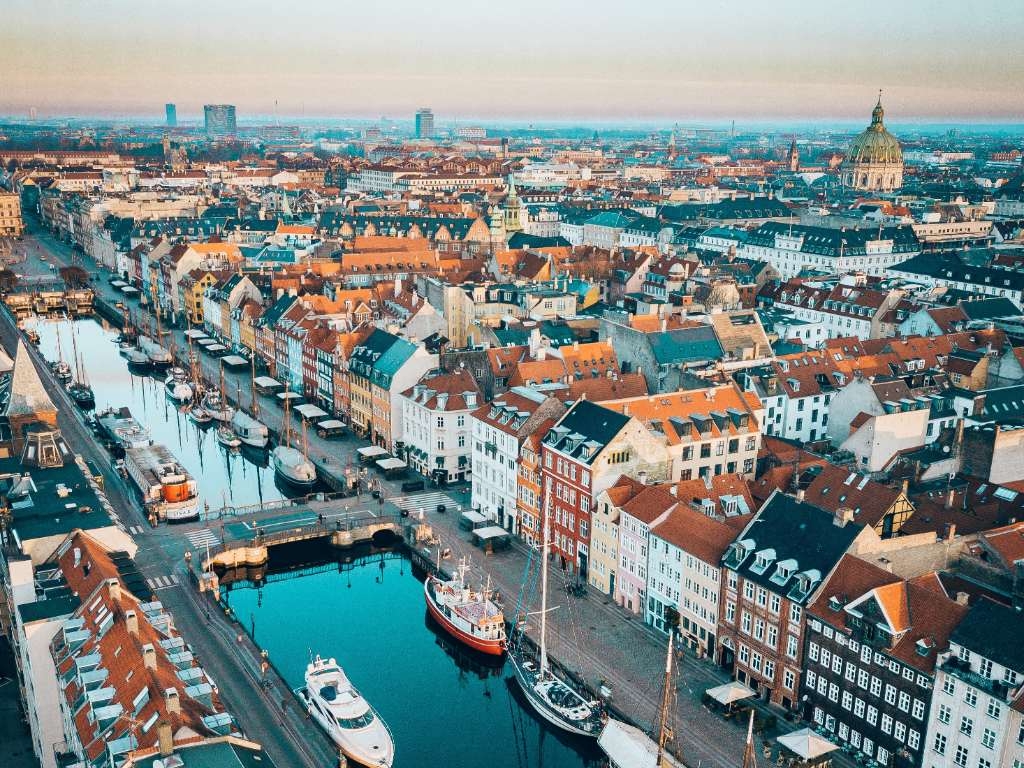
Denmark: The Small Nordic Nation With a Big Design Scene
Table of Contents
Smaller and more densely populated than the other Scandinavian countries, Denmark forms something of a bridge both geographically and culturally between the far north and the main part of the European continent. With the North Sea to its west and the Baltic to its east, Denmark is also something of a crossroads between Western and Eastern Europe. The country’s strategic location and abundance of coastline have shaped its fascinating history, from eras of war, exploration, and great power to a firm present-day commitment to democracy and international institutions such as NATO and the European Union.
In terms of landscape, Denmark may lack the diversity of latitudes and altitudes found in neighboring Sweden and Norway, but it is no less beautiful, with dramatic coastal scenery, idyllic rural landscapes, and cities and towns that blend centuries-old architecture and tradition with groundbreaking modern design and engineering. The country punches far above its weight in so many areas, from technology, innovation, and sustainability to the arts, entertainment, and gastronomy. (Denmark currently has 27 restaurants with at least one Michelin star, and the cream of the crop, noma and Geranium, occupy the top two spots on the prestigious World’s Best 50 Restaurants list.)
Lots of islands and a peninsula

A bit less than half the size of Maine, Denmark is the smallest of the Scandinavian countries. It consists of the Jutland peninsula, which shares a 42-mile border with Germany—the only part of Denmark that is connected by land to mainland Europe—and more than 440 named islands, of which 72 are inhabited. No point in Denmark is more than 31 miles from the sea.
Copenhagen is the capital city and is located on the largest island, Zealand, overlooking the Øresund strait (which divides Denmark from Sweden). The opening of the Øresund bridge in 2000 made it possible to cross from Denmark to Sweden by car in only about 10 minutes, with frequent train service as well.
Denmark’s terrain is overwhelmingly flat—the highest point, Møllehøj in eastern Jutland, is just under 561 feet above sea level—but don’t take that to mean it’s visually underwhelming. For example, the coastal scenery is stunning and varied, from the steep chalk cliffs at Møns Klint in the southeast to the dramatic crash and swirl of opposing currents where the North Sea and the Baltic Sea meet off Grenen, a sandy spit at Denmark’s northernmost tip, near Skagen.
Little country, big history
Once upon a time, Denmark was one of Europe’s great powers thanks to its strategic location between the Baltic and the North Sea. During the Viking Age, Danish King Sweyn Forkbeard (Svend Tveskæg) and his son Canute the Great (Knud den Store) controlled Norway, southern Sweden, Greenland, the Faroe Islands, Shetland, Orkney, and much of England. Danish kings also pursued empire farther east. In fact, legend has it Denmark received its flag when a red-and-white banner fell from the sky during a battle in present-day Estonia in 1219, spurring the Danish army to an unlikely victory.
In 1397, the Danish Queen Margrethe I united the three Scandinavian countries in the Kalmar Union, which lasted until 1523. Over the following centuries, a series of wars with neighboring powers resulted in Denmark’s loss of much of its territory, shrinking the country to its present borders. However, the Faroe Islands and Greenland remain as self-governing parts of the Danish Realm, with strong ties that go back over a thousand years.
Nothing rotten in the state of Denmark

The kingdom of Denmark is a constitutional monarchy whose official head is the immensely popular Queen Margrethe II, who has been on the throne for half a century. Thanks to a change in Danish succession law, she is the country’s first female monarch since her namesake, Margrethe I, died in 1412.
Next in line to the throne is Margrethe’s elder son, Crown Prince Frederik, who will be followed by his own eldest child, Prince Christian. The royal family is seen as quite down-to-earth, and Margrethe herself is a talented artist who has illustrated books, designed sets and costumes for several theater productions, and held public shows of her paintings and textile creations. The main royal residence is Amalienborg Palace in Copenhagen, where the changing of the guard can be seen daily.
Nowadays the Danish monarchy performs a largely ceremonial role, representing the country both at home and abroad. Actual political power lies in the hands of the Folketing (Parliament), where 14 political parties currently hold seats, making coalitions and consensus essential.
Creativity and innovation

Denmark has given much to the world, from LEGO (and yes, there is a LEGOLAND theme park, in Billund) to Google Maps to Bluetooth (named after the 10th-century King Harald “Bluetooth” Gormsson), thanks to strong state support for research and development and an educational system that emphasizes critical thinking and creative problem solving.
Danish researchers lead the way in environmental science and design, robotics, food and agriculture, pharmaceuticals, and biomedicine. In fact, a Danish company produces half the global supply of insulin.
Danish design has long been renowned for its simple elegance and focus on functionality. One of the most stunning examples of modern Danish architecture is the Royal Danish Opera House, which sits on the eastern bank of Copenhagen’s inner harbor, facing Amalienborg Palace. Its curved glass façade is particularly striking when lit by the setting sun or illuminated from within during night performances. Guided tours are available.
Farther along the harbor, on the downtown side, the main building of the Royal Danish Library, popularly known as The Black Diamond, is a massive contemporary structure with irregular angles, a black granite exterior that reflects that sky and water, and a central atrium that divides the building, letting in natural light. For design enthusiasts, the nearby Danish Architecture Center is also worth a visit for its varied changing exhibits.
It's easy being green

Look out the airplane window as you descend towards Copenhagen Airport, and you’ll see row upon row of wind turbines rising from the Øresund strait, an appropriate first impression of Denmark, one of the most eco-friendly countries in the world. The vast majority of the country’s energy comes from wind, solar, geothermal, and biomass. In fact, Copenhagen has their sights set on becoming the world’s first carbon-neutral city by 2025.
Denmark’s efficient public transportation network is widely used, but one of the most popular forms of transportation is bicycling, used for commuting and errands as well as for recreation. Of Denmark’s roughly 5.8 million people, about 90% own a bike, and many commute to work and run errands on two wheels, often year-round. There are more than 7,400 miles of dedicated bike routes in Denmark.
Energy and resource efficiency are also a key component of building design. One innovative recent project is Amager Bakke, also known as CopenHill, a waste-burning energy facility in Copenhagen that doubles as a recreational park with year-round artificial skiing and other outdoor activities.
The Danish art of idioms
Danish is a Germanic language, closely related to Norwegian and Swedish. However, while speakers of those languages can often understand written Danish fairly well, spoken Danish is a different story. Unlike its Scandinavian siblings, Danish has a tendency to swallow word endings and unstressed syllables, making it hard for many non-native speakers to tell where one word ends and another begins. Fortunately for visitors, Danes tend to speak excellent English.
Like any language, Danish has its share of colorful idioms. Some of the most entertaining ones refer to animals. For example, where in English you might say something is fishy or you smell a rat, a Dane would say, “der er ugler i mosen”—literally, “there are owls in the bog.”
On the other hand, if there’s nothing to worry about, you might hear, “der er ingen ko på isen” (“there’s no cow on the ice”). And when you’ve successfully completed a task, you can always say, “så er den ged barberet” (“now that goat has been shaved”). Just be sure you’re prepared for wild weather when “det blæser en halv pelikan” (“it’s blowing half a pelican”)—never mind that pelicans are hardly ever seen in the wild in Denmark!
A happy country
Look at any ranking of the world’s happiest countries, and Denmark is bound to be at or near the top. What makes this small country with a relatively cold climate such a great place to live?
One of the key factors is work-life balance. Denmark has a 37-hour work week, with overtime generally discouraged. Everyone is entitled to five weeks of paid annual vacation, and they make the most of it, especially in summer, when many businesses pretty much shut down. Despite the generous time off, Denmark ranks among the world’s most productive countries, proving that longer hours do not necessarily equal getting more work done.
Danes also have a generous amount of parental leave, subsidized daycare, and a strong social safety net with strong unemployment benefits and free or low-cost health care, senior services, and education, including university. Taxes are high (up to nearly 56%), but most Danes consider the money well-spent given what they get in return. It also helps that Denmark is a prosperous, egalitarian society with a well-functioning bureaucracy and low poverty rates.
The hygge hype
Though difficult for non-Danes to pronounce, the quintessentially Danish concept of hygge (roughly, “hooga”) has swept the globe in recent years. The word has no simple definition, but essentially it means taking time out to slow down, relax, and enjoy the simple pleasures of life.
You might find hygge by gathering and playing boards with family or savoring a hot beverage and conversation with friends, or even just by curling up in front of a crackling fire and reading a good book. Denmark’s cold, dark, often gloomy winters are a prime time for a bit of hygge with cozy indoor fun, but even nature activities such as winter walks or summer picnics can fit the bill. Hygge has become such a phenomenon beyond Denmark that the word was added to the Oxford English Dictionary in 2017.
A taste of Denmark

Traditional Danish food revolves around the seasonal availability of wild or farmed ingredients. One dietary staple is rye bread, typically eaten as open-faced sandwiches (smørrebrød) with toppings such as chicken salad, fish, shrimp, hard-boiled eggs, paté, or cold meats.
Heavier dishes include stegt flæsk (crispy fried pork belly) and frikadeller (ground pork meatballs). Potatoes, cabbage, and root vegetables are also important parts of many meals. If you like hot dogs, be sure to try the Danish version, an extra-long sausage stuck into a soft bun filled with toppings such as fried onions and sauce; it’s available from pølsevogne (sausage carts) just about anywhere.
Danes also love sweets, including licorice and chocolate, as well as pastries such as drømmekage (dream cake), made with brown sugar and coconut, and æblekage, an apple cake served with whipped cream. Ironically, the type of pastry that’s often called a Danish is not actually Danish at all—it’s originally from Austria and is known in Denmark as wienerbrød (Viennese bread).
Denmark on the screen and page
Relative to its small size, Denmark has had an outsized impact on the world of literature and the arts. Perhaps the most famous Danish author of all time is Hans Christian Andersen, best known for his fairy tales, including classics such as The Little Mermaid and The Ugly Duckling.
In the 20th century, Karen Blixen, who published under the name Isak Dinesen, gained worldwide fame for her memoir, Out of Africa, and short stories such as Babette’s Feast. More recently, Nordic noir crime fiction has swept the world, with Danish authors such as Peter Høeg and Jussi Adler-Olsen finding global readership, the latter with his Department Q novels featuring a motley crew of investigators solving complex cold cases in Copenhagen and beyond.
Several internationally popular television shows have also come out of Denmark in recent years, including the political drama “Borgen” and the crime series “The Killing" and "The Bridge” (a joint Swedish-Danish production), all of which provide a look at some of the darker—or at least less for-the-tourists shiny—sides of Danish society.
Danes have also made their mark on Hollywood, with four Oscar wins for Best Foreign Language Picture and several additional nominations in recent decades. The most recent Danish Oscar winner, 2020’s “Another Round,” features home-grown Hollywood star Mads Mikkelsen in a semi-comic story of midlife crisis that shines a spotlight on the pervasive Danish drinking culture. Mikkelsen also co-starred in the 2012 Oscar-nominated film “A Royal Affair,” a historical drama based on actual events at the Danish court in the late 1700s.
Planning a trip

Eat: For a quintessential Copenhagen dining experience, head to the picturesque port district of Nyhavn, where you’ll find a variety of restaurants with outdoor seating, including Nyhavns Færgekro, which serves Danish classics in a charming 17th-century building overlooking the canal. Alternatively, the TorvehallerneKBH market hall near Nørreport Station has a wonderful array of food stalls where you can have a casual meal or pick up fresh local products for a picnic in a nearby park.
Stay: Located in the lively Vesterbro district, close to the Central Station and Tivoli Gardens, Andersen Hotel has cozy, colorfully decorated rooms with air conditioning and an included breakfast buffet.
Do: Most visits to Denmark begin in the capital city, Copenhagen, and one of the best ways to get an overview is to take a guided tour of the city’s canals with either a Copenhagen Canal Tour or Netto-Bådene. Departing from Nyhavn and other locations, the tours wind past many of the city’s top sights, passing under numerous bridges, many of them very low, so watch your head!
See Going's deals on flights to Denmark, and join today to get cheap flights delivered right to your inbox.
Published October 24, 2023
Last updated December 21, 2023
Articles you might like
View AllTreat your travel to cheap flights
Most deals are 40-90% off normal prices with great itineraries from the best airlines. If it's not an amazing deal, we won't send it. Sign up for free to start getting flight alerts.
